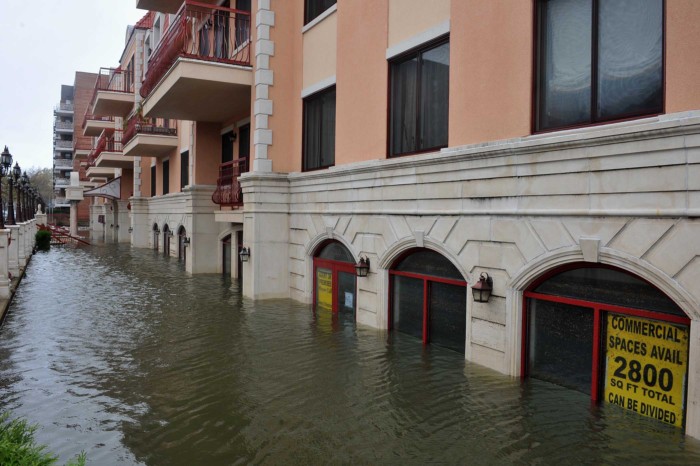How can I protect my business from flood waters?
With widespread flooding occurring across the Midwest this spring, worried business owners are likely asking themselves, “How can I protect my business from flood waters?”
Before developing your game plan to manage a potential flood, it’s important to keep in mind flooding can take many forms – whether caused by the spring thaw of snow cover, flash flooding or a burst pipe.
With wide area river flooding, many properties might be engulfed to a great depth while other properties might be flooded a foot or two above ground level (which means your basement is underwater). On the other hand, small-scale floods caused by broken pipes, damaged fire sprinklers or roof leaks can happen at any time, regardless of the season or your proximity to bodies of water. No matter how water reaches your property, there are many basic measures you can take to reduce the impact of flooding on your business.
Whether facing a natural disaster or burst pipe, here are five things to consider before a flood occurs:
1. Find out if your property is in a flood plain
Check the Federal Emergency Management Agency (FEMA) Flood Map Service Center to access a map which illustrates your property’s proximity to flood plains and better understand your vulnerability to future flood risk.
2. Purchase flood insurance for vulnerable properties
If you find you are in an at-risk location for flooding, be sure to purchase flood insurance well in advance of an emergency. Typically, there is a 30-day waiting period after the purchase of flood insurance before it will take effect. If flood waters are rising, it may be too late to insure your property.
3. Small-scale floods can happen anywhere and any time
Assess your property for the potential impact of a small-scale flood. Keep in mind that anything sitting on the floor could get wet with a localized water leak. Place computers, files or other valuable items on desks rather than floors.
4. Don’t forget the basement
Are there servers, computers or records that can be moved or otherwise backed up? Frequently, after a building has flooded, businesses move their electrical and communications utility rooms as well as HVAC units to upper levels. However, why wait for a flood? You could proactively reduce your business’ risk by moving these services to upper levels before flooding ever hits. Even with the most diligent protection efforts, you cannot always avoid flooding and your foresight and risk-reduction efforts could be invaluable to your organization.
5. Create an emergency response plan for your organization
Do you know what your organization would do if your property flooded? Could you continue to operate as usual in the face of an emergency or would operations grind to a halt? Having an emergency response plan in place and understanding how your business will go about its day-to-day business in the event of property flooding could save a lot of time and expense while you wait for your building to be restored to its pre-flood condition.
What about clean-up?
By taking some basic steps in advance and having a plan to address floods, you can reduce your organization’s potential risk and accelerate recovery. If you’d like to learn more about flood protection and clean-up, watch our recorded webinar, Water World: Preparing for Floods and Clean-Up, by clicking the link below:
To learn more about protecting your property from future floods or repairing the aftermath of a flood-damaged property, please reach out to Chuck Brenner at [email protected].
